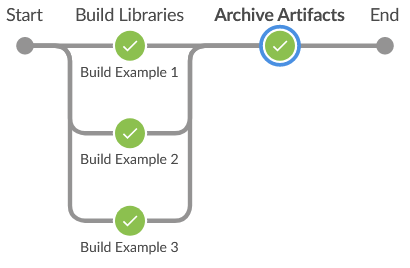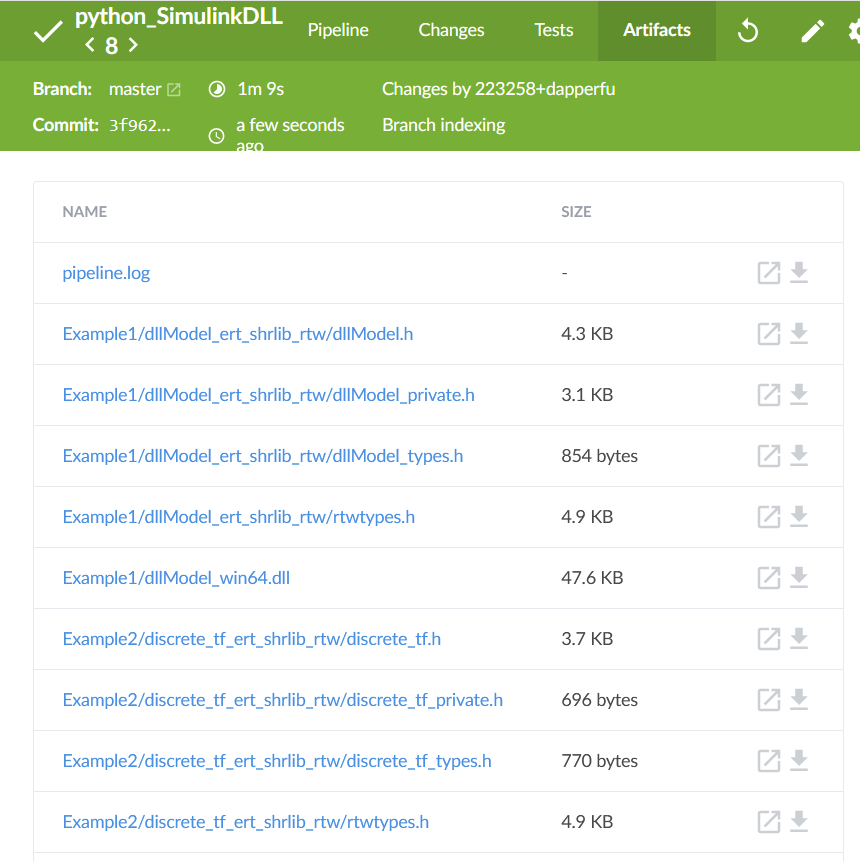Run your Simulink models & libraries in Python.
-
Running model in the loop tests with Simulink becomes time consuming with Matlab & Simulink overhead. There are ways to reduce it (Model reference, etc) however nothing has shown to be as fast as a precompiled shared library.
-
Python has a very mature set of tools and packages to automate testing.
-
Testing can be distributed to machines without Matlab/Simulink licenses.
-
There are more and more Python developers. Being able to hand off a Simulink Library for further use there is a good feature.
- Use Python and it's ecosystem to run complex Simulink models.
- Use Python &
pytestto run Model-in-the-Loop (MIL) tests on Simulink subsystems. - Give Simulink algorithms to developers without Matlab/Simulink licenses to use.
- Use GitHub/GitLab actions and Python to automate testing in the cloud.
- Start a programming language war at your company.
This repository is a set of instructions, with examples, on how to create a Pythonic wrapper for Simulink models. It is not a turnkey Python module to do this:
import simulinkdll
simulinkdll.run("my_model.slx")
do_stuff()For a given library or model configuring the Python should only need done when the Simulink Parameters/Signals change. The end developer will then be able do a import simulink_model, but it takes development time.
- Create a shared library in Simulink.
- Create Python representations of all items in the header file.
- Open the shared library (
.dll,.so) in Python and run the model.
- For demonstrating minimal dll functionality and the steps required to run a model in Python.
- Demonstrate implementions of
SimulinkGlobalvsExportedGlobalinSimulink.ParameterandSimulink.Signalvariables.
A simple discrete transfer function. Compiled with a 1st order low pass filter.
There are two example notebooks for Example 2.
- Simple Example - A simple low-level ctypes wrapper.
- Pythonic Example - Use Python syntactic sugar to create a high level TransferTF python class to interact with the model. Adds datalogging and pandas integration.
-
Example 2 also contains sample
pytesttests in thetestsdirectory. This demonstrates how you can usepytestto test Simulink models. Sample test results are shown shown in Example2/test_results.md. -
Tests can be run on GitHub actions as well. An example of pipeline file is provided: .github/workflows/blank.yml.
Adapted from Mathworks's Simulation of a Bouncing Ball
Running a Simulation in Simulink also has some overhead. By compiling the model to a shared library and executing it, this overhead is eliminated.
bouncing_ball_benchmark.m benchmarks the model by testing increasingly smaller time steps. The model was then compiled and tested in Python and the corresponding times are recorded below.
| Time Step | Simulink Duration (s) | Python Duration (s) |
|---|---|---|
| 1e-4 | 0.5905 | 0.06 |
| 1e-5 | 1.0461 | 0.61 |
| 1e-6 | 8.1991 | 6.08 |
| 1e-7 | 78.9901 | 60.18 |
This project also serves as a proof of concept for using CI/CD devops techniques with Simulink Models. There is a Jenkinsfile that will build each of the examples and archive the artifacts:
- shared library (
.dll) - header files (
.h)
Jenkins Pipeline screenshot:
Jenkins Artifacts screenshot:
Google Indexing:
- MIL Python, Model-In-The-Loop Python.
- SIL Python, Software-In-The-Loop Python.
- Model-in-the-loop testing with Python.
- Software-in-the-loop testing with Python.
- Using Python for SIL testing. Using Python for MIL testing.





